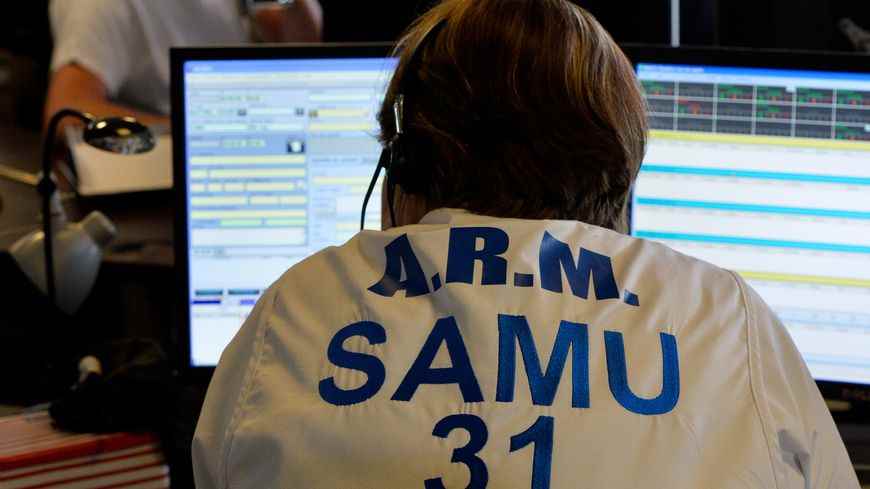Fifth Monday strike in the emergency room of the Purpan hospital in Toulouse. Only vital emergencies are taken care of until Tuesday morning at 8 a.m. The movement aims to ask for more resources. Management has proposed 16 additional posts for Purpan emergencies (plus 9 in Rangueil emergencies and 6 in psychiatric emergencies). But that does not satisfy the striking staff. And the movement lasts.
Result, the SAMU has fewer solutions for directing patients, and many more calls. To get an idea, SAMU 31 agreed to open its doors at France Blue Occitania. The telephone platform is installed on the Purpan hospital site. Inside, it’s a large, quiet room, with about fifteen professionals in white in front of their computers, headset and microphone in their mouths. The phone rings constantly and the emergency strike complicates the situation in finding support for patients.
We are seated next to the emergency doctor Jean-Michel Berthommier. They explain. “At the moment, we have even more calls. With the help of medical regulation assistants, we are trying to establish a diagnosis. When we get there, we contact the patient’s general practitioner. And we decide. We can send a team without necessarily bringing the person to the hospital. But sometimes, we have no choice. Even if we lack means, beds. After ten hours of work, we are happy to remove the helmet.
20% more calls over a year
You must know that SAMU 31 receives nearly 1,000 calls per day. A figure up 20% over one year. Last Sunday alone, 400 ambulances were dispatched during the day. This situation also increases the waiting time for users who call 15. This is problematic, explains Professor Vincent Bounes, SAMU 31 department head.
“For some patients, the delay can reach several tens of minutes, which is sometimes very long when you have a patient in an ambulance who is not always in optimal condition. Clearly, at present, extending these delays , it’s never good for patients. Or waiting for ambulances before treatment. This situation also creates an overload of work. Stress and fatigue are also error factors.”
The teams are careful by reinforcing the breaks a little, and trying to turn a little more. “But _we are not immune to increasing our error rate due to this work overload_. It is even a fear that is completely proven,” recognizes Vincent Bounes.
